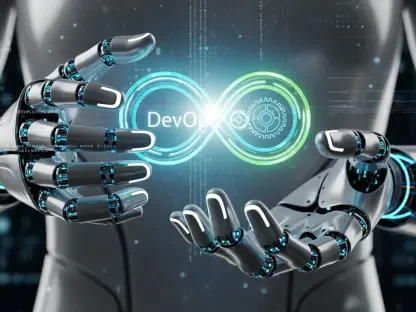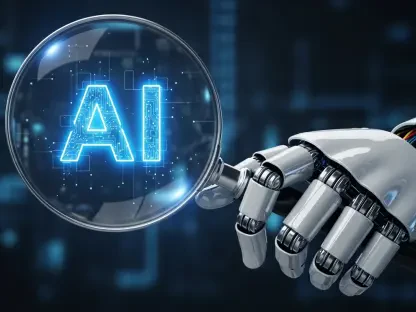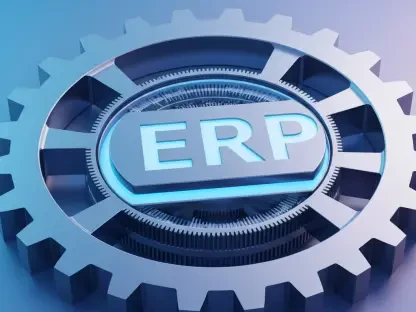In the ever-evolving world of digital transformation, Anand Naidu stands out as a beacon of expertise. With years of experience navigating both the frontend and backend of development, Anand has a unique perspective on how to balance the human and technical aspects crucial to successful transformations. Today, he shares insights from his participation in an intricate billion-dollar digital transformation project, reflecting on themes such as foundational process enhancement, stakeholder alignment, and the broader impact of socio-technical change.
Can you give us a brief overview of the billion-dollar digital transformation project you were a part of?
I was involved in a massive digital transformation project at one of the world’s largest tourism companies. This project, which spanned over three years, aimed to modernize technology across all subsidiaries by replacing legacy systems and integrating data enterprise-wide. It was a complex venture, dealing with decades of accumulated processes, and required bridging siloed departments to align with the organization’s digital vision.
Why do you think 70% of digital transformation initiatives fail to meet their objectives?
Many organizations leap towards innovative technology without first addressing existing foundational issues. If the underlying processes are flawed or outdated, introducing advanced tech only builds on instability, leading to inefficiencies and failure to meet set goals.
What were some of the foundational issues that needed fixing before implementing new technology in this project?
We found that many processes were added over the years without updating the initial assumptions. Systems were not communicating, creating silos within departments. Each section of the business operated independently, leading to a multitude of disconnected solutions.
How did you identify the strategic misalignments between technology investments and business needs?
We observed that there was a significant gap between technology investments and the organization’s actual business needs. Tools were often tweaked to serve individual departments rather than being aligned with a broader organizational strategy, which highlighted the need for a unified approach.
In the context of your project, what was the difference between a supply chain and a supply network?
A supply chain suggests a linear process focused on cost efficiency, while a supply network comprises a web of relationships that are interdependent. We transitioned from viewing our operations as a linear “chain” to a “network,” accommodating the complexity and interconnectivity of today’s business ecosystem.
How did shifting from a traditional supply chain mindset to a supply network perspective change your approach to the project?
Understanding our operations as a network allowed us to manage complexity more effectively rather than trying to oversimplify. We embraced these nonlinear flows and interdependencies, focusing on strengthening the connections between all parts of the organization.
Can you provide an example of how network thinking helped solve a specific problem within the organization?
Network thinking helped us integrate hotel operations with other units, mitigating issues like stockouts during peak times. By creating new communication channels and planning sessions, we ensured that the hotels were synchronized with corporate events and product launches, preventing disruptions.
What role did stakeholder alignment play in the success of the transformation?
Stakeholder alignment was crucial. We established a governance structure with executives from all critical functions to maintain constant communication and foster collaboration, addressing misalignments promptly.
How did you ensure that different departments were aligned in their processes and priorities during the transformation?
We created cross-functional working groups that represented all affected departments for each major process. This approach helped us ensure that all departments were aligned with both the overall goals and each other during the transformation.
Can you explain the importance of treating a digital transformation as a “socio-technical” change rather than just an IT project?
Treating digital transformation as a socio-technical change acknowledges that technology and human elements must evolve together. If people and processes don’t adapt to new systems, any changes will likely fail, as technology alone doesn’t drive transformation—people do.
What were some of the challenges you faced in breaking down silos between departments?
Silos were deeply rooted due to long-standing independent operations. Bringing these departments to work together required untangling established practices, resolving conflicts of interest, and fostering an organizational culture of alignment and cooperation.
How did you leverage influential employees to win over skeptics and promote change within the company?
We identified influential employees in each department and recruited them as change champions. By sharing the transformation’s vision and the overarching network perspective, these champions helped us communicate the necessity and benefits of change to their peers.
How did you address the human element of change during the transformation?
We prioritized change management, emphasizing the ‘why’ behind changes. This involved transparent communication and extensive training, ensuring everyone understood their roles and aligned incentives to foster readiness and acceptance of the transformation journey.
What strategies did you use to align structural and organizational changes effectively?
We paired structural adjustments with organizational changes, such as workshops and coaching. For instance, when implementing a new system, we adjusted performance goals and adapted job roles to encourage coherence between new systems and traditional workflows.
Why is co-evolution between technology and people essential for successful digital transformation?
Co-evolution ensures that as technology evolves, the organization adapts in tandem. This mutual adjustment optimizes both processes and technology, encouraging sustainable transformation that delivers measurable benefits and better user adoption.
How did redefining success and shared metrics contribute to collaboration across the organization?
By setting shared metrics, such as end-to-end order fulfillment time, every department’s performance was linked to collective outcomes. This promoted collaboration and fostered a unified effort toward common goals, moving away from isolated KPIs.
What was the role of governance in managing complexity during the transformation?
Governance provided a platform for managing complexity, allowing us to address issues promptly and maintain organization-wide alignment. It helped ensure that all stakeholders were engaged and aware of their roles in the transformation process.
Can you give some examples of the “spaghetti diagram” and how it helped in understanding the organization’s complexity?
The spaghetti diagram illustrated the tangled interdependencies within the organization. By mapping these connections, we identified bottlenecks and feedback loops that obstructed efficiency, leading to more strategic interventions for process improvement.
How did you manage to create virtuous loops instead of vicious cycles during the transformation?
We actively involved end-users in the design process to ensure solutions met their needs, avoiding disengagement that leads to ongoing issues. This approach generated early successes, boosting confidence and spurring further positive engagement and alignment.
In what ways did the digital transformation project foster a new mindset of continuous learning within the organization?
By focusing on co-evolution and adapting processes alongside new technologies, we shattered the idea of a singular, finite transformation project. The emphasis on continuous improvement and learning established a culture where innovation became an ongoing capability.
What advice would you give CIOs about focusing on foundational rather than flashy tech solutions?
I would advise CIOs to prioritize solidifying foundational systems over chasing the latest tech bestseller. Modernizing the core processes results in sustainable improvements and sets a stable ground for future innovations to thrive.
How important was change management in ensuring the project’s success?
Change management was pivotal. It involved clear communication, ongoing engagement, and fostering an adaptive culture that embraced transformation. Without addressing the human side of change, even the most technically sound solutions would fall short.
Can you share any insights into how feedback loops helped improve user adoption and the overall design of new systems?
Feedback loops were integral in refining system design and promoting user adoption. By continuously gathering insights and making adjustments, we ensured that technology met actual user needs, leading to better experiences and deeper integration across departments.
What key lessons did you learn that might help other organizations embarking on digital transformation?
Focus on strong foundational processes, bring people on the journey from the onset, and view your organization as an interconnected system rather than isolated parts. Embrace complexity as a chance for innovation and continuously align technology with evolving human capabilities.
Finally, how do you foresee the future of digital transformation unfolding given your experiences and insights?
I see digital transformation becoming more integral to organizational growth, with emphasis on adaptability and continuous evolution. As technologies advance, the key will be ensuring that the human side remains in sync, creating harmonious socio-technical systems that can navigate future challenges.









